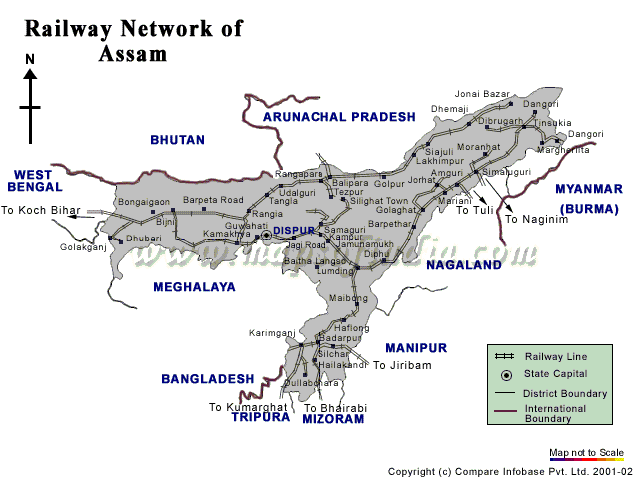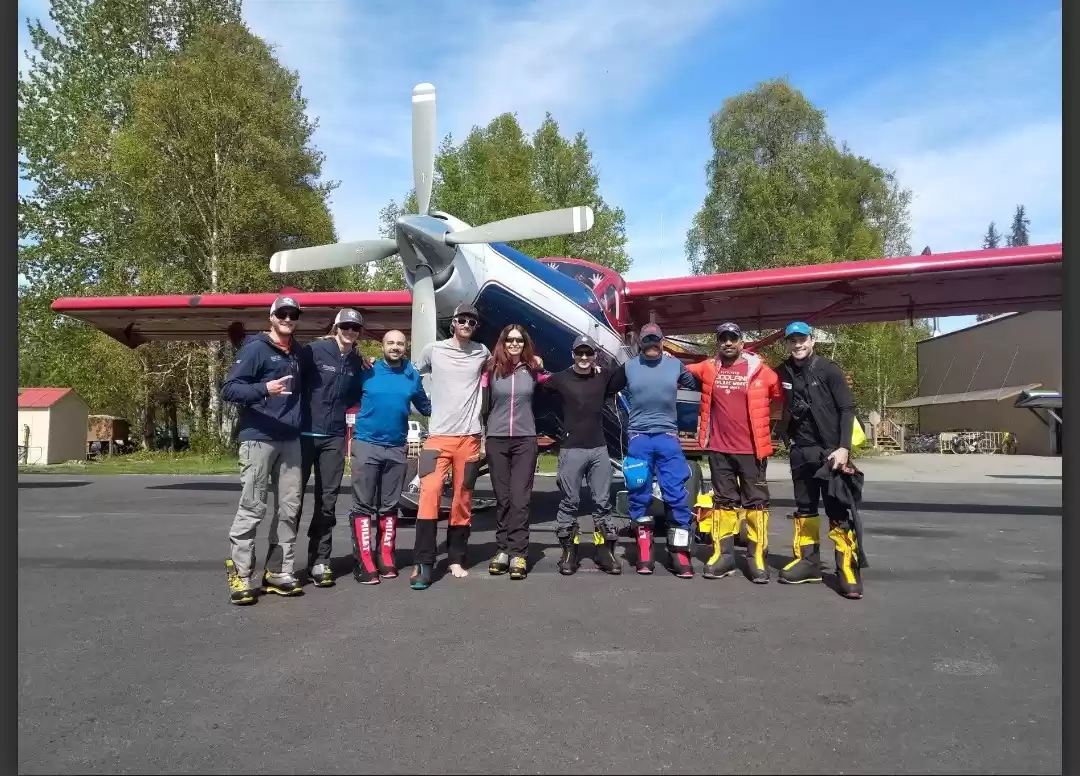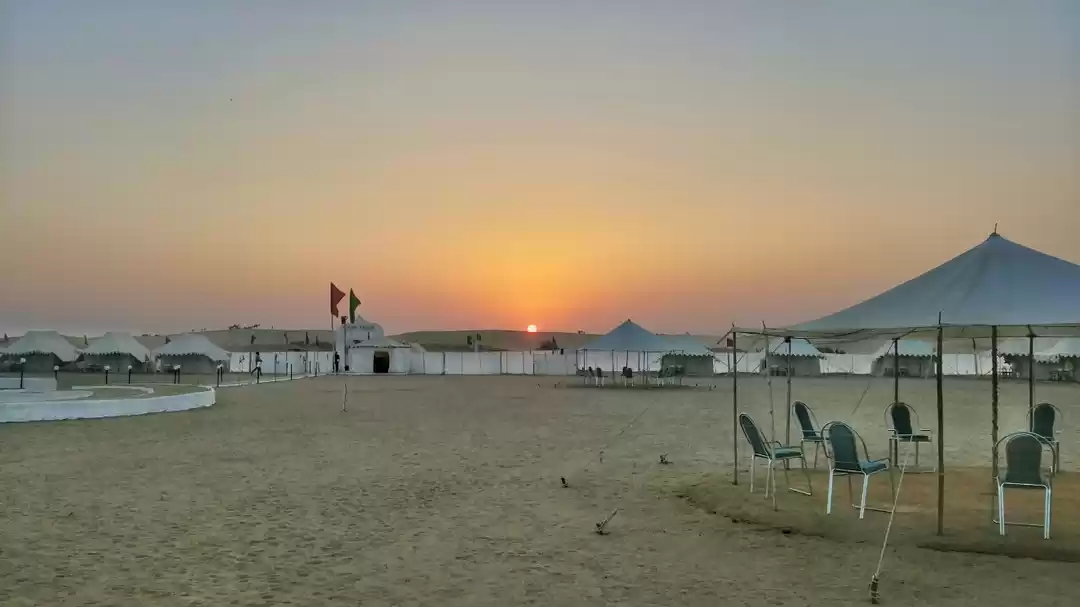
Cavalry Tank museum is located in ahmednagar in maharashtra. It is the only tank museum in asia. And has around 50 tanks and armoured vehicle from world war 1 and world war 2 era. This place is a fascinating place as one can spend more than 2 to 3hrs exploring each and every tank and the 3 halls present here with several information related to war and our brave soldiers. I managed to pass on some information related to the tanks and armoured vehicle kept at display below
Centurion MK Vll main battle tank
The tank entered service with the british army in 1949 and was replaced in 1967 by the chieftain MBT. Sixteen countries apart from india have used the 4000 produced centurions. This family of tanks were very effective fighting vehicle, was capable of being up gunned and up armoured. This tank was powered by the rolls royce meteor MK lV B 12 cylinder liquid cooled petrol engine. And was capable of 21.5MPH on roads. The engine was the development of the rolls royce merlin aircraft engine which was used to power the world war ll spitfire and hurricane fighters. This tank was armed with a 17 pounder and later 20 pounder main gun, a 0.3inch co-axial machine gun and a 0.3inch machine gun on the commanders cupola and six smoke dischargers on each side of the turret. Israel fitted diesel engine and 105 MM gun later. The centurion has seen combat in korea,india,south arabia,vietnam,the middle east and suez. Loved by the indian regiments and known as patton killer in 1965 Indo-pak war.

M3 A3 light tank (stuart)
M3 A3 american light tank known as stuart MK V entered service with the US army in 1941 and was used by the british and other allied forces during the second world war. The M3 A3 was produced in quantity by the american car and foundry company. It was powered by a continental radial air cooled engine and had a road speed of 36MPH. The armament included 37 MM gun and three 0.303 inch machine guns. M3 A3 was developed directly from the basic stuart tank and therefore had a similar performance and size. It had two periscopes on top and carried houses on turret sides. The turret was also extended at the rear to house the wireless set. The stuart saw action during the second war in africa and in the pacific with allied forces. The indian army employed this tank in zojila,srinagar valley,naushera and nagaland.

Grant canal defence light(CDL)
Commander oscar le thoren, RN, proposed mounting a powerful light on tanks so as to blind an enemy during a night attack. His idea of world war l was not pursued till 1940 when the war office ordered some 300 special turrets apart from matildas. These turrets were fitted on grant tanksand in this form it was called the grant canal defence light, A misleading term adopted as a security measure. The grant CDL was the grant tank retaining its 75 MM gun, thus keeping an offensive role, had the search light enclosed in an armoured housing which imcluded a ball mounted MG in the front face. The search light contained a 13 million candle power ARC light and a special reflector together with a stroboscopic shutter. No large scale CDL operations ever took place. It was used in small numbers twice to illuminate the crossings over rivers rhine and elbe in 1945. Some CDL tanks were sent to the far east in 1945 but were never used. Americans callef it shop tractor.

Type 97 CHI-HA medium tank
It entered service with the japanese army in 1938 and continued in service till 1945. It was also used by china after world war ll. The tank weighed 15 tons and was powered by a mitsubishi 12 cylinder air cooled diesel engine which developed 170HP and gave the tank a top road speed of 24 MPH. The armament consisted of a 57MM gun and two 7.7 MM machine gun, one of which was mounted in the rear of the turret. The CHI-HA had a crew of 4, of whom two were in the turret. The engine was at the rear of the hull, and power was transmitted to the gear box in the front of the hull through propeller shaft. This was one of the most successful japanese tanks and was used in large numbers in the asian and pacific theaters until the end of world war ll. There were many variants of the type 97 medium tank.

M3 A3 light tank (stuart)
M3 A3 american light tank known as stuart MK V entered service with the US army in 1941 and was used by the british and other allied forces during the second world war. The M3 A3 was produced in quantity by the american car and foundry company. It was powered by a continental radial air cooled engine developing 250 BHP and had a road speed of 36MPH. The armament included 37 MM gun and three 0.303 inch machine guns. M3 A3 was developed directly from the basic stuart tank and therefore had a similar performance and size. The main differences were the high rear deck,no cupola,rounded hull front and longer superstructure with cutaway corners It had two periscopes on top and carried grousers on turret sides. The turret was also extended at the rear to house the wireless set. This tank during world war ll,saw action in the african desert,burma,capture of antwerp and with the american forces in the pacific.The indian army employed this tank in zojila,srinagar valley,naushera and nagaland.

T 54 Main battle tank.
It entered service with the russian army in 1950. This tank was logical development of T 44 which was developed towards the end of world war 2. T 54 has also been built in china which was known as T 59 as well as in czechoslovakia and poland. India was one of the 34 countries which was using this tank. The main armament consist of 100 MM D-10T rifled navy/tank gun. The secondary armament consist of two 7.62 MM machine guns, mounted co-axially in the bow. And a 12.7 MM machine gun in anti aircraft role. The tank is powered by a V-34 12 cylinder air cooled diesel engine developing 520 BHP at 2000rpm and max speed of 30MPH. Additional fuel tanks can be fitted to the rear of the hull to increase the operating range. The tank can create its own smoke screen and can ford upto a depth of 18ft using a snorkel. This tank was one of the first of the soviet union tanks to be inducted into the indian army. It has seen action in fazilika during the 1971 Indo-pak war.

M 24 Chaffee light tank
It entered the U.S. service in 1944 and was supplied to many countries including the U.K. It was the quantum increase in the technology compared to the M 5, which it replaced.In the firepower and protection the M 24 surpassed all other light tanks in the world war 2, while its mobility was comparable with the extremely agile M 5. Its 75 MM gun was almost equal to that of sherman and most powerful than the armaments of most medium tanks in 1939. The seconday armament of two 0.3 inch machine guns mounted co-axially and in the bow. And a 0.5 inch machine gun on the commanders cupola. The vastly improved hull and the turret shape increased protection by the elimination of short traps,reduction of the silhouette and better sloping of the armour. Major assemblies were easily available for maintenance. This tank was powered by two cadillac 44T24 V8 watercooled petrol engines,each developing 110BHP at 3400rpm. This tank was employed by allies in europe and North Africa during the world war 2.

Sherman duplex drive
It was developed for the normandy landings in 1944. The revolutionary duplex drive designed by nicolas straussler 1942-43, could make 30 ton tanks to swim through water. Initially tried out on the valentine and the tetrach light tanks. The principle was to create a large collapsible boat around the tank, the bottom being the hull of the tank and the sides,bow and transom being canvas on a tubular frame. The vertical frame members were hinged in concertina fashion and the canvas from its closed position on the trackguard were erected by introducing pressure by compressed air bottles into flexible rubber pipes fixed vertically against the canvas. By means of the power take off from the rear idlers, the propellers pushed the tank through water. Firing was not possible while afloat. The DD tank could drive off the open bow-door ramps of landing crafts 2-3 miles off shore and achieve speed of 4 to 5 knots while afloat.
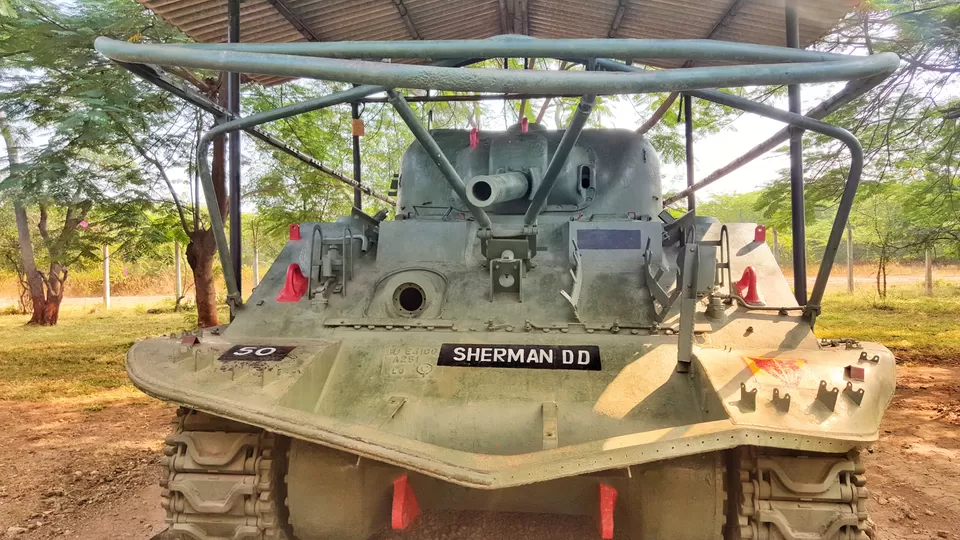
M 41 walker bulldog light tank
The standard light tank in use with the U.S army at the end of world war 2 was the M24 chaffee. As replacement for chaffee the M 41 was authorised for production in 1950 and was named walker bulldog after the general w.w. walker. The tank was powered with a 6 cylinder petrol engine developing 500 BHP. The tank had a crew of 4, armament of one 76MM with a 'T' type blast deflector, one 0.3 inch machine gun co-axially mounted and one 0.5 inch anti aircraft machine gun. The M41 was one of the three main tanks developed by the U.S during 1950s. The other being M47 and M103 heavy tanks. The M41 was provided with a hull escape hatch to give the crew better chances of survival than if they bailed out via the turret and drivers hatch. The M41 was later replaced in the U.S army by M551 sheridan. M41 also saw service with the pakistan and a host of other countries world wide. This tank was captured during the 1965 Indo-pak war.

A 9 cruiser tank mark l
This tank was designed for large manoeuvres and deep strike for the british army of 1930's. This tank replaced some of the ageing vickers medium MK ll in british service. The first A 9's were issued to the 1st armoured division. Which took them to france in 1939-40 and left practically all of them at dunkirk. The 2nd and the 7th armoured divisions operated these in egypt until 1941. By then it was out of date and out gunned. It was made lighter than the medium tank so that it could be powered by a commercial engine. The armour protection was very limited. It had a 2 PDR gun and one 0.303 inch vickers machine gun in the turret. The A9 was the first british tank to have power traverse for the turret and also an auxiliary engine for starting ,battery charging and driving a fan for the fighting compartment, other important design features were a combined driving and fighting compartment, external steering brakes on the rear sprockets and the slow motion suspension which was later used on the valentine.

Valentine infantry tank mark lll
This tank was a private venture by vickers armstrong ltd and built as a infantry support heavy tank. It derived this name from the date when the design was submitted to the war office 14 february 1938, St.Valentine's day. This tank had a 3 man crew amd was armed with 2 PDR gun and one 7.92 MM besa machine gun. Powered by an AEC diesel engine developing a 131HP with a road speed of 15 MPH. Produced by britain and canada this tank was also used by france and soviet union. It was first employed by the british army in the western desert in 1941 and successive models continued to be used till 1944. The desert valentine gained a great reputation for reliability, reportedly some motored over 3000 miles on tracks following the 8th army. Valentines were also used in madagascar, the arakan(burma) and at gibraltar. By 1944 valentine had been superseded as a gun tank. But the hull and chassis were used in a wide variety of specialist vehicles.

Infantry tank mark ll (matilda A12)
The infantry tank mark ll was derived from the A7 experimental series of medium tanks. Universally known as the Matilda. It was designed to perform the same tactical roles as the infantry tank mark l but was additionally armed with a 2 pounder(40MM) gun and a co-axial 7.92MM besa machine gun. The power units used were two AEC 6 cylinder inline diesel engine developing a total of 174 BHP giving road speed of 15MPH. The anti aircraft machine gun mounting on the turret, apertures along the hull side to expel the mud cakes from the tracks while moving and hydraulic power for turret rotation were the notable features of this tank. The 7th RTR of the british army was the first unit to be equipped with this tank and gave a good account of itself in the retreat to dunkirk. This was one of the most famous british tank of world war ll,forming a major part of the british armoured forces during the 8th army's battles in the western desert.

Armoured car MK l fox l
The fox l was built in 1942, was the canadian equivalent of the humber MK lll armoured car. This version had greater width than any of the british humbers and was also slightly heavier with more powerful engine. Hull and turret were made by hamilton bridge co and mounted on general motors rear engined chassis. The hull was of nickel chrome molybdenum steel and the turret was rotated by a single speed hand traversing gear. The turret was larger than that of humber l and ll. Crew increased to 4 and was armed with 0.303 inch and 0.5 inch browning machine guns. It was powered by general motors 270 6 cylinder engine developing 106 BHP. Drive was normally on the rear wheels but four wheel drive could be engaged. Protected vision was approved for the commander by means of the periscope and the driver by a laminated glass block. For driving in reverse an observation port in the engine bulkhead could be uncovered by operating a hydraulic pump and rising the engine cover.

8.8CM FLAK 18
Designed by the krupp team in sweden to circumvent the versailles treaty the flak 18 became the most famous gun of the secondworld war. Originally designed as an anti aircraft mount, the 88 assumed a wonder weapon status as an anti tank gun in the north african campaign. With the trend towards higher calibres for main guns the 88 was the primary armament of the PZ. KPFW Vl (tiger), with the addition of the muzzle brake and electrical firing mechanism. High muzzle velocity, a rapid rate of fire and long range of the gun made the tiger the most formidable tank of the second world war. Design of the main guns thereafter has been very largely influenced by performance characteristics of the 8.8 CM KWK 36,the nomenclature of this weapon when mounted in a tiger. This gun is thus a forerunner of tank armament of today

Landing vehicle tracked (A) 4
The landing vehicle tracked was intended primarily for use in flood relief operations and rescue of crashed aircrew. This armoured version the LVT(A)4 mounted the turret and howitzer of the M8 75MM howitzer motor carriage. In all 1890 of the LVT(A)4 were built. It was powered by a continental W670-9A 7 cylinder air cooled radial petrol engine developing 250 BHP at 2400rpm and having road speed of 17 MPH and waterborne speed of 6 MPH. The LVTs were first used in guadalcanal operations in august 1942 in a logistic role. Tactically they were first used in 1943 at tarawa in the pacific and in europe were instrumental in the scheldt estuary assault and the crossing of the rhine, to name but two amphibious operations. The LVTs were provided to the british army during world war ll and supplied postwar to france,italy and spain among others.

APC SKOT
APC SKOT or OT-64A is the basic member of skot series. OT-64(obrneny transporter) was jointly developed by czechoslovakia and poland in 1959 and entered into service in 1964 since then it was widely exported outside the warsaw pact countries. The polish designation for the vehicle is "Sredni Kolowy Opancerzny Transporter "(SKOT). Tatra of czechoslovakia provided the chassis and the automotive components and FST/LUBIN the armoured body and the weapon system was provided by poland. SKOT vehicles used by czechoslovakia were umarmed while those used by poland were fitted with a 7.62MM machine gun. Some of OT-64As have been fitted with 2 sagger ATGW(anti tank guided weapon) mounted over the top of the troop compartment. A total of four sagger ATGWS can be carried in the vehicle. This NBC protected APC can carry a crew of 20 persons. Various versions of SKOT are OT-64B(SKOT-2),OT-64C(SKOT-2A),OT-64C(2)(SKOT-2AP). The production of OT-64 family was discontinued in mid 1980s. APC SKOT was in service with czechoslovakia,hungary,iraq,libya,sudan,syria,uganda and india.

M3 A1 Reconnaissance vehicle
The M2 A1, with radio and other modifications, was standardised as the M3 scout car in 1936. This vehicle powered by a hercules JXD six cylinder engine,had a four wheel drive and was capable of 55 MPH on roads. The M3 A1 had 0.5 inch armour,seating for eight men and the skate ring on three sides of the open topped crew compartment added to the flexibility of the 0.3 inch M1919A4 machine gun. The M3 A1 introduced the distinctive front roller, designed to prevent the vehicle from digging its nose into ditches and other obstacles. The M3 A1 was introduced in the US army as reconnaissance and command vehicle in 1939, the 13th cavalry regiment was the first unit to be equipped with it. The M3 A1 was used extensively for reconnaissance duties early in world war ll, and was one of the first vehicles made available under the lend-lease act of 1941 to british and soviet union. The M3 A1 marked the end of wheeled reconnaissance vehicles but served as a basis for half track development.

M3 Half track APC
It entered service with the US army in 1941 and were also used by britain,france,soviet union,netherlands and was in long service with the israeli defence force. Its development dates back to 1938, when a four wheeled scout car was fitted with a tracked rear bogie of the T9 half track. In tactical terms the half track was equivalent of the british bren carrier, but was larger and more powerful. It found many uses with all the allied armies in europe and north africa during the world war ll. Although the concept was pioneered by kegresse in russia before world war l, the american half track was the original design by the ordnance department. This half track had a crew comprising of a commander,driver,gunner and 10 persons. It was powered by a white 160 AX 6 cylinder inline petrol engine developing 147 BHP at 3000rpm. It had a 0.5inch machine gun. The half tracks were out dated by 1945.

BTR-60 PB
It was first appeared in 1965. As the third modification in the BTR-60P series of APCs developed by the russians after the useful experience of wheeled APCs in second world war. BTR stands for "Bronetransporter" which means "Armoured transporter". These were employed widely by the soviet army and also by more than 30 export customers including India. It can carry a crew of 14 and is fitted with 14.5MM KPVT and 7.62 MM PKT machine guns. It is a versatile amphibious weapon platform and it also performs well in the cross country conditions. Fitted with overhead armour cover, it has three firing ports which are located on either side of troop compartment. It is vulnerable to high explosives and small arms fire. It has seen action in yom kip-pur war, in soviet invasion of afghanistan and also in the chechen and yugoslav wars. There was also a version of BTR 60 PB used as an artillery command and observation post by the east german army. It remained in production till 1976 and it was replaced by BTR 70. BTR 60 saw service with afghanistan,angola,algeria,bhutan,botswana,congo,cuba,djiboutum east germany,ethiopia,finland,India and iraq.

Car scout MK lll lynx l
It was the canadian equivalent of british daimler dingo,but was heavier and fitted with more powerful engine. The international harvester company built hull was mounted on canadian ford 3 ton 4x4 chassis. But with 8 inch wheelbase. The ford V shaped 8 cylinder engine developing 95 BHP and giving max road speed of 55 MPH was mounted on the rear and had full length engine covers a five speed pre-selector forward reverse transfer gear box allowed the vehicle to be driven at speed in either direction. It had an independent suspension of double wish bone type with double coil springs. The crew of two in an octagonal compartment had a bren LMG and were driven overhead protection by means of a folding armoured roof. The lynx ll had heavier axles and springs and smaller steering ratio than the lynx l. Sand channels for desert use were carried at the rear.

Rolls Royce armoured car
It was the most successful of all the armoured cars built on the existing commercial chassis in the early days of world war l. A simple body of thin sheet metal was built on to a silver ghost car chassis. And a light round turret mounting a 0.303 inch vickers machine gun was placed above the crew compartment. There were no episcopes or vision blocks. The commander,gunner and driver used slits in the armour for observation. The single 0.303 vickers machine gun was mounted on a yoke in the turret and projected through a hole in the armour plate. It weighed 3861 kgs and was powered by rolls royce 6 cylinder inline watercooled petrol engine developing 40-50HP and max speed of 45MPH. In this guise it became the most widely used armoured car in the world war I and saw action in france,egypt,east africa,russia,guerilla warfare in arabia and for internal security duties in India in 1945.

Schwerer panzersphahwagen (8 RAD)
SDKFZ 232 armoured car was most powerful and best known model usedby german army throughout world war ll. Some 1255 being in use. In 1934 the bussing Nag firm of leipzig was issued a development contract for new 8 wheeled chassis with all wheel drive and steering. The bussing Nag 8x8 GS chassis with new armoured body took over functions of the original six wheeled SDKFZ 231 series with suffix"8 RAD" designation as distinguishing mark. It had crew of four, a turret mounted 2 cm gun and was powered by L8V-GS eight cylinder water cooled petrol engine developing 150BHP at 3000rpm. By a virtue of a relatively complex chassis layout. This was the most advanced cross country wheeled vehicle of that time giving excellent cross country ability,climbing gradients of 30 degrees, crossing trenches of 1.25M and vertical obstacles of 0.5M andmaximum road speed of 53MPH. It was eventually replaced by the SDKFZ 234 series.

Conventry mark l
Conventry, a british armoured car generally similar to the daimler but larger was produced in 1944. The design was a joint effort by humber ltd and the daimler company. The main differences between the two vehivle was in the armament and crew. The mark l was armed with a 2 PDR(40MM) gun and co-axial 7.92 besa machine gun with a crew of four. While the mark ll carried a 75 MM gun and a crew of three. The engine was the american hercules 6 cylinder 175 BHP which gave it a speed of 41MPH. The armour was 8.2MM with angled plates and weighed 11.5 tons. High speed reversing which had proved so valuable on the daimler was included in the conventry design. The principal driving controls were duplicated in the rear position and by means of a forward/reverse gearbox the car could be driven in reverse in all five speeds. At the end of world war ll the production was stopped. A few were however used by french army in Indo-china in 1955.

M 8 light armoured car
The US M 8 light armoured car called grey hound by the british was developed by the fordmotor company. At the end of 1943 this american light armoured car came into service and a total of 8523 were built between 1942 and 1945. A low, fast amd remarkably quiet car the M 8 saw action in north east europe and italy in 1944-45. A few were used by british armoured car regiments and the reconnaissance corps in europe and by the east african armoured car squadron. It was a 6x6 vehicle mounting a 37 MM gun and 0.30 inch co-axial browning machine gun in an open top,hand traverse turret. Powered by a six cylinder hercules JXD engine of 110BHP the car had a top road speed of 56 MPH. When the vehicle first arrived in the middle east the floor was considered too thin to withstand mine blast and it became practice to line the floor with filled sand bags

AMX 13 LIGHT TANK
It was used as a tank destroyer or reconnaissance vehicle and served as a lighttank in the french army. The tank entered the service with the french army in 1953-54 and in 25 other countries including india. This was the first tank to have an oscillating turret. This design of the turret mounting the 75 MM gun enabled the french to install an automatic loader and this in turn reduced the crew to three. The empty cartridge cases were ejected automatically through a hatch in the rear of the turret. The tank also had a 7.5MM/7.62MM machine gun co-axial to the main armament. The tank weighed 15 tons and was powered by a sofam model 8 GXB petrol engine. This tanks served in two regiments of the indian army till 1970 and then with reconnaissance squadrons. It was feared and known as "the jumping jack" by the enemy in the 1965 Indo-pak war. It was employed in chusul and nathula in sikkim and saw very active service in khemkaran and chhamb in the 1965 war and again in chhamb jaurian in 1971.
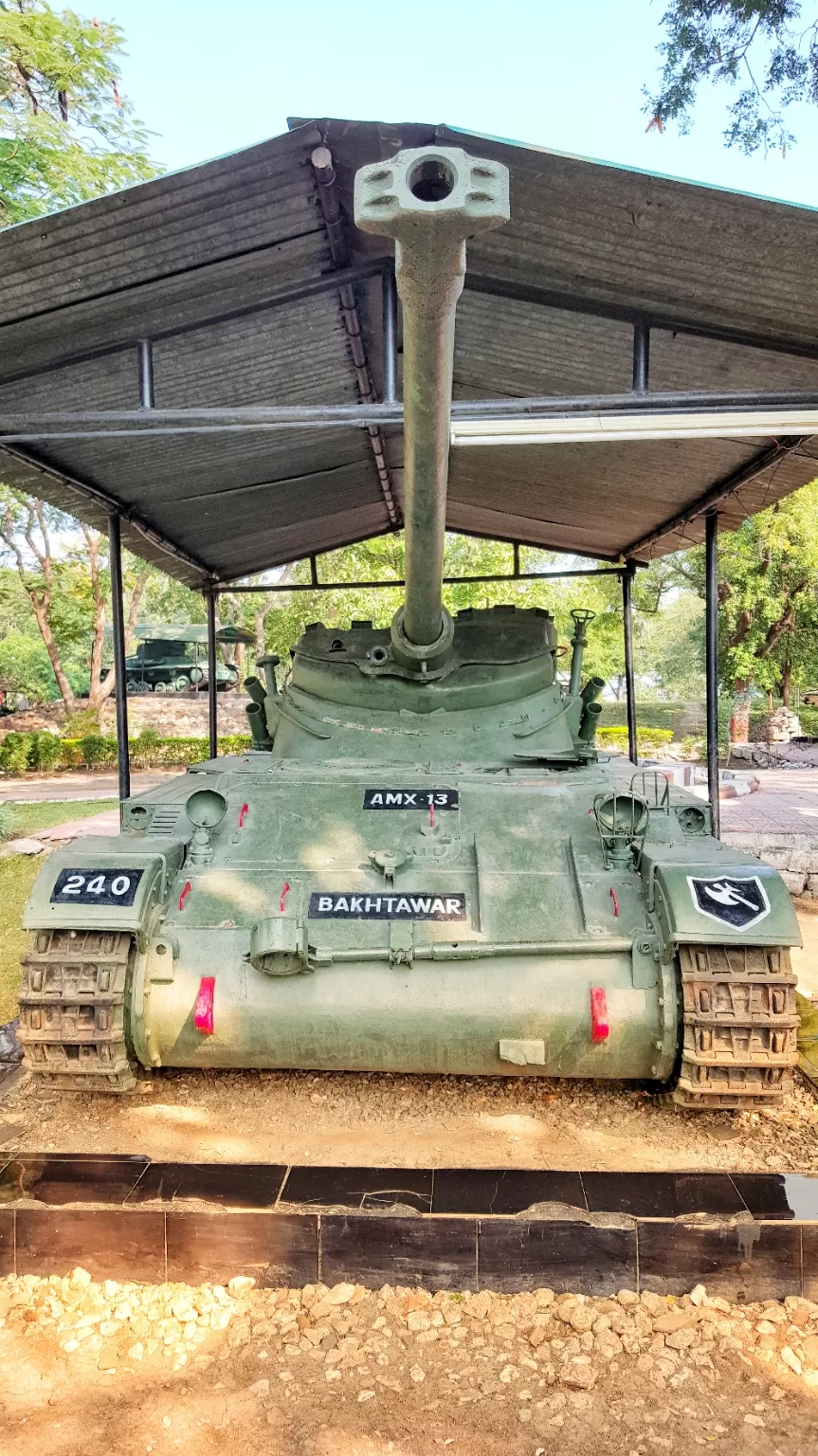
M 48 Medium tank patton
Entered service with the U.S army in 1953 and itss production was stopped in the 1960. The hull is of cast armour construction as is the turret. Main armament of 90 MM gun.Secondary armament of 0.3inch/7.62 MM co-axial machine gun and a 0.5 inch machine gun mounted on the commanders cupola. Can be fitted with a dozer blade at the front of the hull. It can ford of 8ft with the aid of a kit. This tank was later powered by a continental AVDS 1790 2A 12 cylinder, air cooled diesel engine developing 750BHP at 2500rpm and max speed of 30MPH. The M 48 had a infra red device for driver and search light mounted over the main armament. The M 48 has been used by U.S,pakistan,korea and vietnam. The pakistanis lost almost 100 M 48s in punjab in the 1965 Indo-pakistan campaign. This is one of them. The Israelis also used their M 48s in the six day war in 1967. This was the most dreaded and publicized american tank of the 1950s.

Sherman
With about 50000 produced in all variations, the sherman was the most widely produced tank during world war ll. Suspension was a rugged and simple design, known as VVSS(vertical volute spring suspension) with three units (or bogies) on each side and each with two road wheels. Early production of M4's had a three piece front. Transmission cover and a cast one piece turret mounting a 75MM main gun.

Carden-lloyd universal carrier T-16
It was developed in 1939 from a long line of infantry carriers of similar size. 74000 of such were produced in UK,Australia,Canada,New Zealand and US, where it was called as T16. Production ceased in 1945 and the vehicle remained in service until the early 1950s. Memories of this carrier are fading in the infantry now. But in its day it was one of the best loved of any special vehicle. Design originated from the ammunition carrier of 1921, an armoured tracked vehicle intended to convey 18 pounder ammunition across bullet swept ground impassable to horse drawn wagons of army service corps. This carrier was powered by a ford 8 cylinder water cooled inline petrol engine developing 85 BHP at 2800rpm amd speed of 32MPH and was armed with a bren light machine gun. Most of the carrier in service were used for carriage of infantry and its support weapons such as mortars,MHGs and towing of anti tank guns. This carriers saw service in all theaters of world war ll.

Vijayanta
This is the first indigenously produced Indian tank and was modeled on the valiant series of tanks designed by vickers ltd(UK). The vijayanta was revolutionary in design for its power pack and transmission and unequalled for the accuracy and consistency of its 105 MM gun. In tech inventory of tank of the indian armoured corps, it will always be fondly remembered as the "first amongst equals". On 10th august 1966, 2 lancers became the first regt to be equipped with the vijayanta. Thereafter numerous armoured regiments have been kitted with this tank and it has done yeoman service to the nation by safeguarding its frontiers for nearly four decades. The vijayanta was phased out of armoured corps in 2004 after completing its service life. Trustworthy till the end,firing for the last time on 10th jan 2004.

Carrier armoured wheeled IP MK ll
The canadian ford 3 ton 4x4 chassis was used for several of these type of armoured vehicles and a special rear engined chassis was made in 3 versions (CO ll QRF,C 191 QRF,C 291 QRF) and was supplied mainly to india as a basis for the indian pattern wheeled carriers. It was powered by a ford V shape 8 cylinder engine giving 95BHP. The armament was a bren gun or boy gun or a mortar. The armoured hull for these rear engined ford carriers were produced by the east indian railway workshops and the tata iron and steel co. This carrier was used in world war ll in all theatres where indian troops participated. There were six versions of this vehicle and some 4655 were produced.

Humber mark lV armoured car
It entered service with the british army in 1941 and was phased out shortly after world war ll. It was used by many countries including india,burma,ceylon,cypress and mexico. The facilities for the manufacture of armoured cars in UK was fully committed in 1939 and yet more cars were needed. To save time the rootes group of the manufacturers adopted the existing design of the guy armoured car. The hull built by the guy motors was mounted on a rootes carrier artillery tractor which was originally built for the Indian Army. Powered by rootes six cylinder petrol engine developing 90HP. It had a maximum speed of 45MPH. The mark lV had a three man turret and was armed with a 37 MM machine gun and a BESA 7.92MM machine gun. Most humbers also had a 0.303 inch bren light machine gun for anti aircraft defence and smoke dischargers. Indian independant armoured squadron used these in nagaland from 1957 till the outbreak of bangladesh war in 1971.

Sherman beach armoured recovery vehicle(BARV)
A large number of indigenous special purpose conversions were produced on the sherman chassis for service in the british army. This sherman BARV was one such conversion which came into being following a decision in october 1943. That a recovery vehicle for beach work would be required for the normandy landings. Tested in december 1943. It proved most successful,able to work upto 9ft of water. Fifty two sherman BARV's were delivered to the allied 21 army group by D-Day, 06 june 1944. In post war service, the BARV was named sea lion. The sherman BARV was a converted sherman ARV MK-1 with a welded superstructure,bilge pump and engine intake trunking for deep wading. It was a towing vehicle only. The winch was omitted by simplify the conversion and shorten the production time.
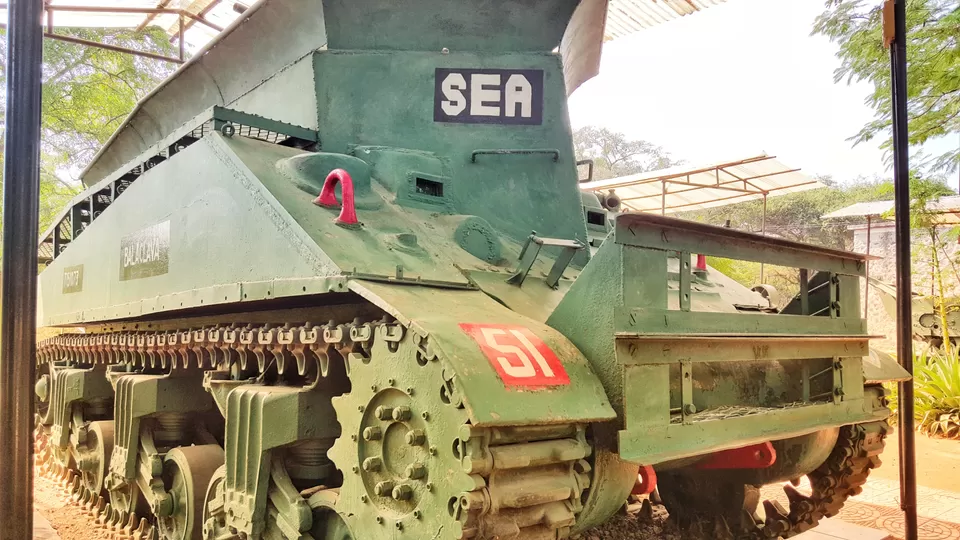
Valentine bridge layer
It was the first of the british bridge laying tanks of the second world war. It was mainly used for training as it was replaced for operational use by the churchill bridgelayer in 1943-44. Some were however used in burma. The valentine bridge layer was a valentine ll adapted to carry a 30ft scissors bridge. Hydraulic rams and arms were fitted for launch and recovery with the hydraulic equipment fitted in the turret space. The unfolding type of scissors bridge was raised and then extended over the gap by means of hydraulic power. Once the bridge has been opened out and dropped in front of the tank. It could be uncoupled without the crew dismounting. The tank could then back away to make room for the fighting machines coming over from behind. A 30ft gap could be spanned to transport a load of 30 tons.

Churchill bridge layer
It was one of the most important british tanks of 1939-45 as it was adaptable to specialised armour roles needed for the invasion of europe 1944. The vehicle's roomy interior, regular shape and heavy armour made it particularly useful as an armoured bridge layer. Development of this vehicle started in 1942 and was based on experience gained with the covenanter and valentine bridgelayers. The churchill bridgelayer was a turretless churchill lll or lV with hydraulic equipment fitted in the fighting compartment to work as a pivoted arm which could launch the 30ft bridge horizontally from its stowage on the hull top and into a position spanning a ditch or crater. The bridge was made in 4 parts for ease in handling. But was carried and launched rigid. It could support vehicles upto 60 tons. This bridgelayer remained in service in the british army until the early 1960's till replaced by the centurion bridgelayer.

Churchill ARV mark l
There are many variants on the churchill chassis as it was quickly found that it was well suited to such tasks as bridging,mine clearing,armoured recovery and flame throwing. Hence it saw service in many special roles. Especially with armoured engineer units. One such role was that of an armoured recovery vehicle. Churchill ARV mark l was produced using the chassis of the churchill l or ll. But this did not have any dummy turret the stores were carried in the turret space. The churchill ARV mark ll was a churchill ll or lV chassis with the turret removed and replaced by a fixed box like dummy turret and dummy gun. It was fitted with demountable jibs,earth spade at rear and a 2 speed winch with a 25 tons pull. Produced in 1944 and used by 79 armoured division during second world war. This ARV remained in service for many years after world war 2.

Sherman crab "flail tank"
It was developed by the british to clear a path through minefields and was used by 79 armoured division in 1944-45 in europe. The idea of flails was originated by captain Du Toit,a south african engineer, as a means of pulverising the ground to detonate the mines or remove them by force. Flails with small bob weights on the ends of the chain, were mounted on the sherman tanks. The drum at the front of the tank rotated at speed and the flailing chains detonated the mines in front of the vehicle. The speed during such operation was 1 MPH. Flail technology for making an assault lane through the mine field led to the evolution of trawl equipment in 1960. The tank was armed with a 75 MM main gun and was powered by a ford GAA V-8 water cooled inline petrol engine developing 500 BHP at 2600rpm.

Centaur dozer
The centaur dozer was one of the variants of the centaur(cruiser tank mark Vlll) A27L. The centaur tank was developed by leyland motors ltd. A liberty V-12 engine with a matching merritt brown transmission was fitted. A winch and jib fitted to operate the dozer blade was powered by the main engine. These dozers were allotted one per squadron to regiments equiped with cormwell tanks and also used by royal engineers. About 90 centaur lV with close support howitzer armament were used in france after the landings in june 1944. A number of centaurs were converted into anti aircraft role and most of the reminder were converted to cromwells by the installation of meteor engine when they became available to replace the original liberty engines.

M22 light tanks:locust (airborne tank)
The weight of this tank was kept low at 8 tons to be carried in aircraft. It has a 162HP lycombing petrol engine, which could move upto 40 MPH. The armament consisted of 37 MM main gun and a 0.30inch machine gun. A crew of three operated this tank with 25MM frontal thickness 830 locust, were built by marmon herrington(USA). The british developed a large hamicarglider to carry their own tetrach airborne tank. A handful of these tanks accompanied the british 6th airborne division during the rhine crossings of 24 march 1945.

Type 95 HA-GO light tank
It entered service with the japnese army in 1935 and remained im service till 1945. The type 95 was used by the cavalry and the infantry and saw action in china,burma and pacific islands in world war ll. When it was originally built the type 95 compared well with the other light tanks of that period. But by the early part of the world war ll it had become outdated. The tank weighed 7.4 tons and was powered by mitsubishi model NVD 6120 6-cylinder air cooled diesel engine developing 120 HP. The hull of the tank was both rivetted and welded construction. The engine and transmission were at the rear of the hull. The inside of the tank was provided with a layer of asbestos padding in an effort to keep the temperature as low as possible. Armament consisted of a 37 MM tank gun and a 7.7MM machine gun mounted in the front of the hull and another mounter in the turret in the 5 o'clock position.

Archer self propelled anti tank gun
The 17 pounder anti tank british gun was capable of defeating most german tanks of world war ll. But lacked mobility. Vickers started the design work for propulsion of 17 pounder on valentine tank in july 1942. Archers saw action in europe from october 1944 amd was withdrawn from the royal artillery im 1950 and then supplied to the egyptian army. Archers gun fired over the rear end of the vehicle due to its length and for speedy movement. It carried 52 rounds of ammunition. It had a crew of four as commander,gunner,loader and driver. It also had a 0.303 inch bren light machine gun for use in anti aircraft role. It weighed 16.25 tons and was powered by general motors six cylinder inline diesel engine developing 192 BHP at 1900rpm and with road speed of 20MPH. The 17 pounder gun was the most successful british anti tank gun of world war ll, which was also mounted on the "Sherman Fireflies" and american "Achilles".

Sexton self propelled gun
It was the conversion of the ram tank to mount the british 25 pounder field gun/howitzer. The sexton was in use since 1944. It served with the british army until the mid 1950s and was also used by the canadian,indian,italian,portuguese and south african armies. It weighed 28.5 tons and was powered by a continental R 975-4 nine cylinder air cooled radial engine mounted at the rear of the hull. The crew of six consisted of commander,driver,gunner,gun layer,loader and wireless operator. The super structure gives protection to the crew from mortar,artillery and small arms splinters. The armament has an elevation of + 40 degrees and a depression of - 9 degrees. Traverse being 25 degrees left and 15 degrees right. Standard 25 pounder sights for both direct and indirect laying were provided. This gun was the main stay of indian armoured division SP artillery for many years till replaced by abbott SP gun.

Topaz amphibious APC
Topaz or OT-62(obreny transporter 62) was developed by czechoslovakia and poland and is equivalent to soviet BTR-50 PK APCs. OT-62 entered service with czechoslovakia in 1964 and with poland in 1966. The polish army calls the vehicle the "transporter opancerny sredni" the czechoslovak army called it the " transporter obreny pasovy" or topas. In both the countries the vehicle was normally used by the tank divisions as an armoured personal carrier. Topaz has a very powerful engine,fully enclosed troop compartment and has ability to carry 20 soldiers. The commander is seated in the front of the vehicle with a 360° observation ability. The vehicle is fully fitted with an over pressure NBC system consisting of an electrically/manually operated blower. Topas is fully amphibious and was propelled in the water by two water jets at the rear of the hull. Thr topas sports a pintle mounted machine gun as the only armament. The troops enter and leave the vehicle through the large door in either side of the vehicle. Topas has number of variants like OT62A(model 1), OT62B(model 2), OT62C(model 3), OT-62 ambulance and command vehicle fitted with additional communication equipment.
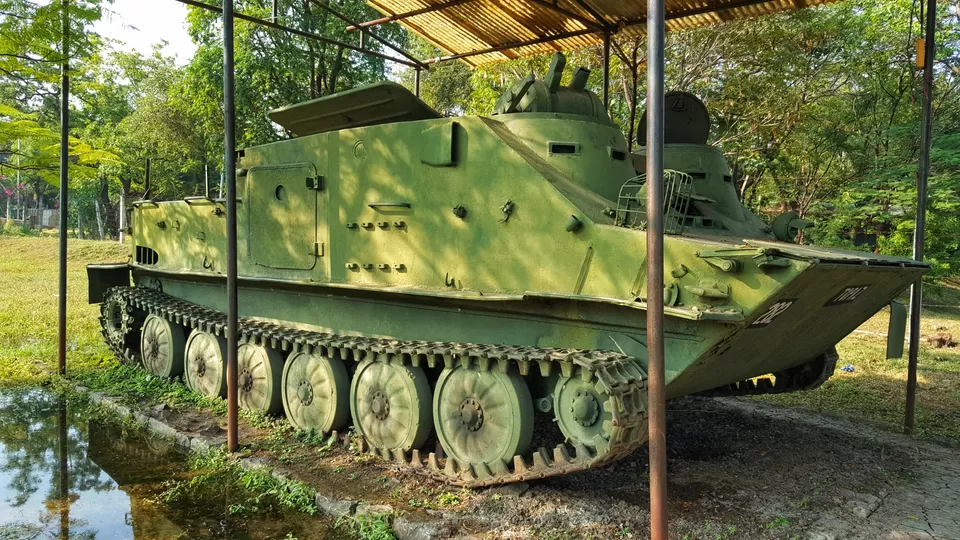
A22 churchill infantry tank (MK Vll)
It was a replacement for matilda ll. It was designed to function in the shelled area of the battle zone, in support of infantry. It was powered by two 6 cylinder bedford water cooled engines developing 350 BHP and giving a road speed of 15.5MPH. The MK Vll was armed with a 75 MM gun and two 7.92MM besa machine guns. The MK Vll was the first british tank to have all round vision commander 's cupola, when closed down. The other changes in the MK Vll included full length track guards, thicker armour, circular side doors and driver's visors, redesigned air louvres to permit easlier water cooling. It was used on most on the european battlefields. The first time they were in action was the diepperaid in aug 1942 and later in alamein,tunisia and Italy. This tank was also used by russia, india and jordan.

Carrier armoured wheeled IP
This version of the indian pattern ford (4×4) armoured wheeled carrier had a turret. The main supplier of the military vehicles to the british other than US was canada. Vehicles produced in australia,india,south africa, new zealand,etc were almost invariably of canadian origin. Although the body work and certian other components were often of local manufacture. The ford motor company of india a subsidiary of ford motor company of canada was assembling canadian ford vehicles. The manufacture of the body work was with the east Indian railway workshops and tisco. It had a V shape 8 cylinder petrol engine producing 95BHP and mounted a bren gun. India's total war production included 64216(4×2) vehicles, 45213(4×4) vehicles, 3088(6×4) vehicles, 11614 civilian type vehicles and 9876 miscellaneous vehicles.

M3 grant medium tank
The M3 series was evolved from the M2 medium tank, weighing 28tons it was powered by wright continental R-975-EC2 nine cylinder air cooled petrol engine developing 340 BHP and road speed of 26 MPH. This mounted a 75 MM gun in a sponson on the righthand side of the tank. Above the hull superstructure was a turret with a 37 MM gun and 0.30 machine gun. Two more 0.30 machine guns were in the hull. This was the first tank from which indirect fire was possible. This tank was known as grant,after general uillysses grant and had a british designed turret. The grant had it's first impact at the battle of gazala in may 1942. The majority of grants were used in north africa and the middle east. The M3 was replaced by M4 in 1942 and the M3's were sent to the far east, where it replaced the matilda,valentine and stuart. The M3 was finally declared obsolete in march 1944.










